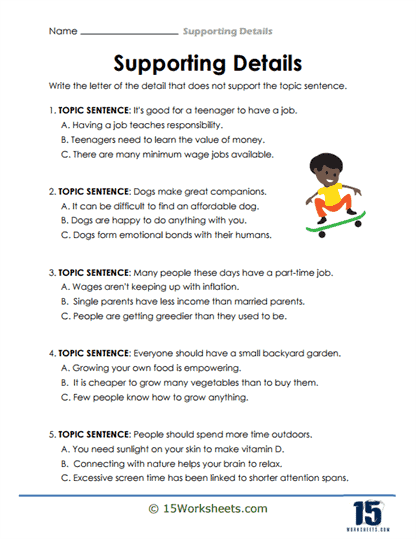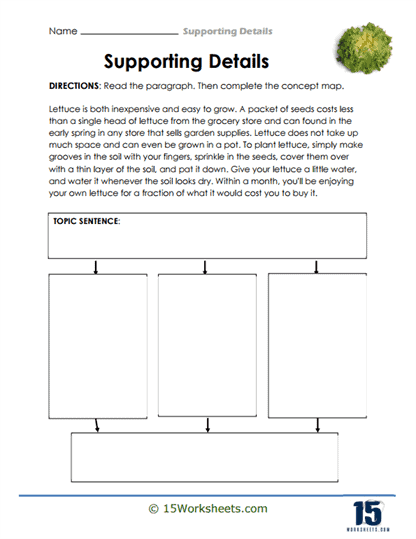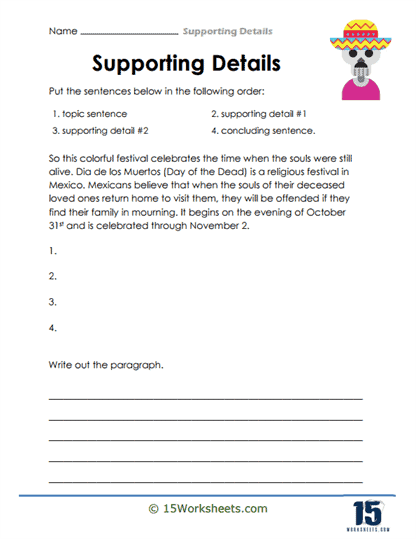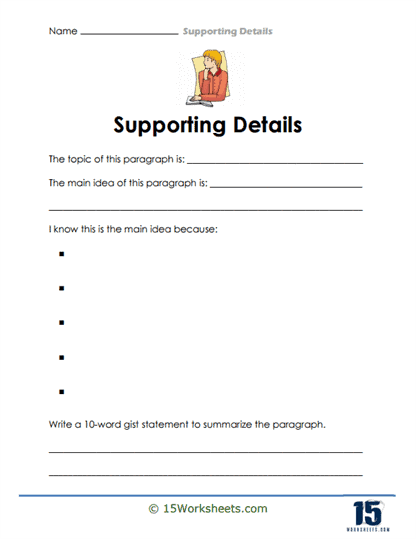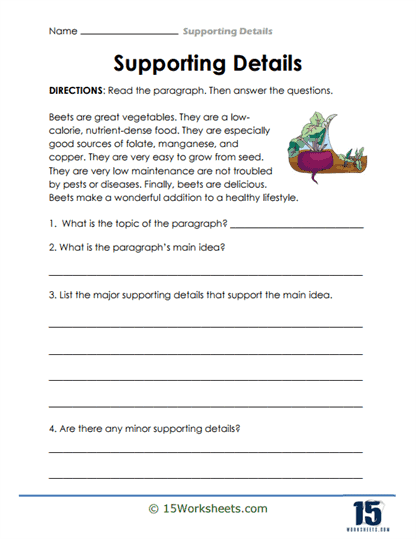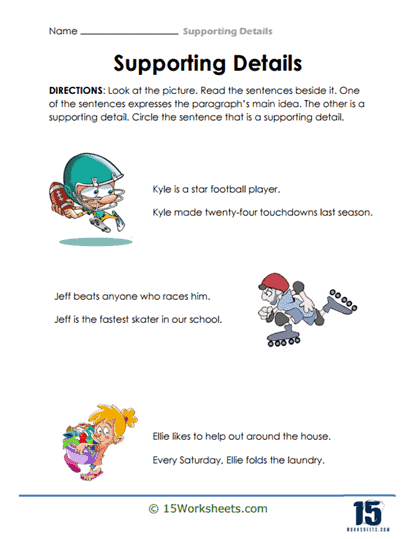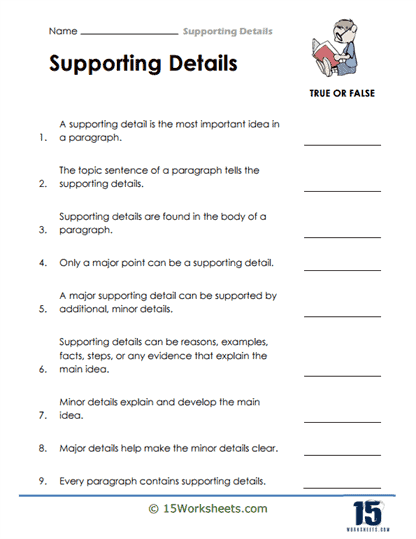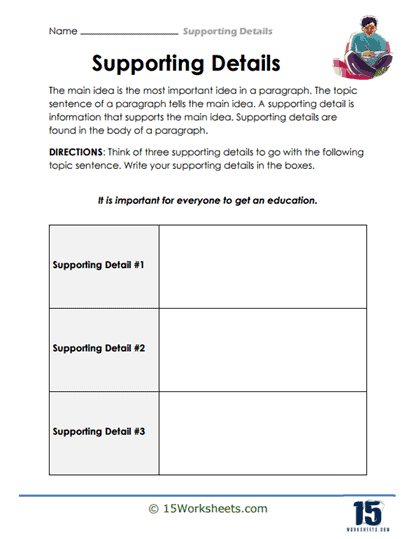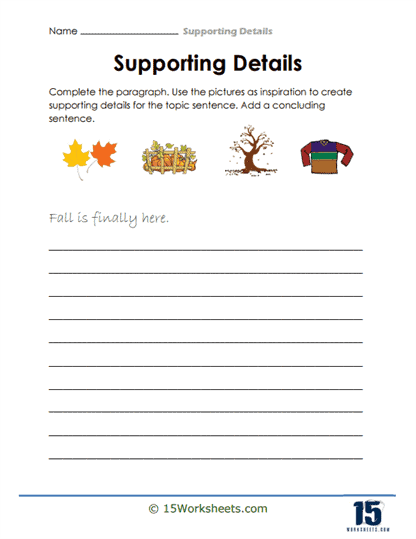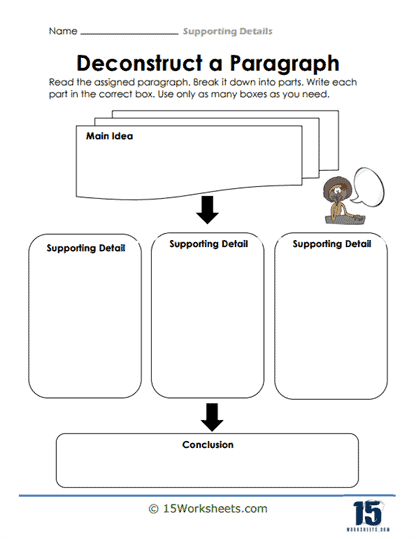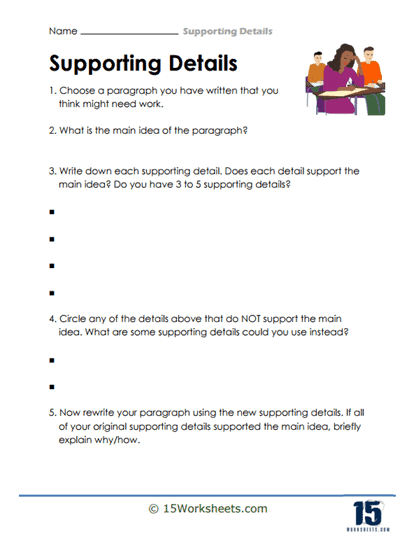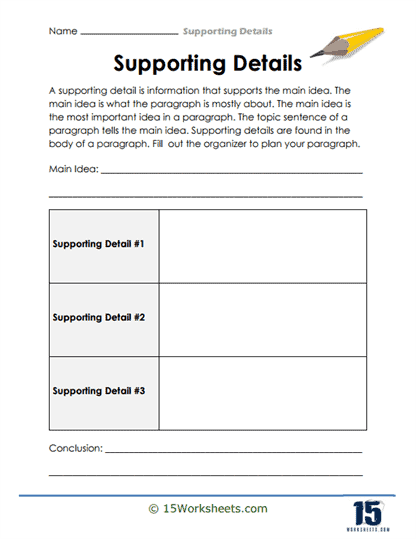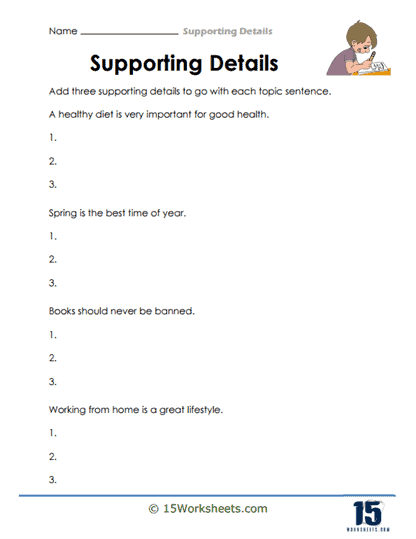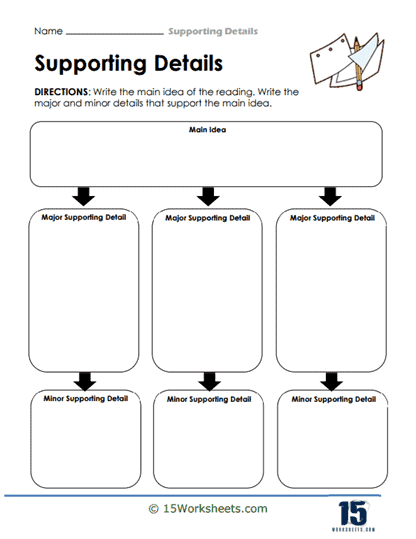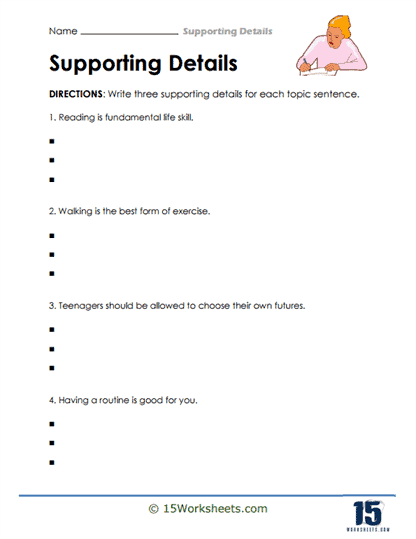Supporting Details Worksheets
All About These 15 Worksheets
This collection of worksheets for students about supporting details are designed to help students identify and analyze the details that support the main ideas of a text. These worksheets include a variety of activities that encourage critical thinking and the ability to distinguish between important and less important information. Some of the activities that are included in these worksheets involve the following:
- Identifying supporting details – Students are asked to identify the supporting details that are relevant to a particular main idea or topic.
- Creating graphic organizers – Students are encouraged to create graphic organizers such as webs or diagrams to help organize and visualize the supporting details.
- Summarizing key details – Students are asked to summarize the key supporting details in their own words, using only the most important information.
- Analyzing the relevance of details – Students are encouraged to think critically about the relevance of supporting details, and to distinguish between details that are essential and those that are less important.
Overall, these worksheets can help students to develop the important skill of identifying and analyzing supporting details in a text. By understanding the relationship between main ideas and supporting details, students can learn to read more critically and communicate more effectively about what they have read.
Topic Sentences and Supporting Details
Topic sentences and supporting details are important elements of effective writing. A topic sentence is a sentence that expresses the main idea of a paragraph or section of a text, while supporting details provide evidence or examples that support the main idea. Here are some tips and examples for writing effective topic sentences and supporting details.
Tips for Writing Effective Topic Sentences
- Be clear and concise: A topic sentence should be clear and concise, and should convey the main idea of the paragraph in a single sentence.
- Use strong verbs: Using strong verbs in your topic sentence can help to make it more engaging and compelling.
- Make sure it relates to the thesis: The topic sentence should be related to the thesis statement of the overall essay or piece of writing.
Examples of Effective Topic Sentences
- “The main cause of climate change is human activity.”
- “Effective leadership requires strong communication skills.”
- “The development of technology has revolutionized the way we live and work.”
Tips for Writing Effective Supporting Details
- Be specific: Supporting details should be specific and concrete, and should provide evidence or examples to support the main idea.
- Be relevant: Make sure that the supporting details are relevant to the main idea and help to further develop or clarify it.
- Use a variety of sources: Use a variety of sources to support your argument, including examples, statistics, and expert opinions.
Examples of Effective Supporting Details
- For the topic sentence “The main cause of climate change is human activity,” supporting details might include data on greenhouse gas emissions or examples of how human activity has impacted the environment.
- For the topic sentence “Effective leadership requires strong communication skills,” supporting details might include examples of how leaders have used communication to motivate their team or resolve conflicts.
- For the topic sentence “The development of technology has revolutionized the way we live and work,” supporting details might include examples of how technology has changed specific industries or improved our quality of life.
Topic sentences and supporting details work together to create a cohesive and effective piece of writing. By following these tips and examples, students can improve their ability to communicate their ideas clearly and convincingly.

